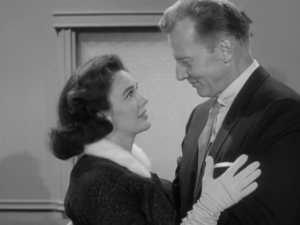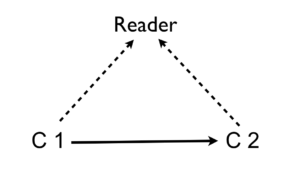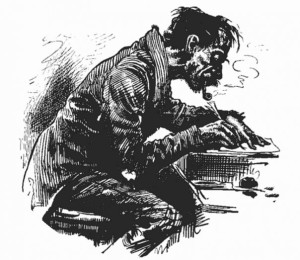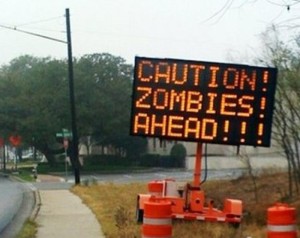by James Scott Bell
@jamesscottbell
Here is another first page for critique. See you on the other side.
At the Edge of the Radiant Sea
If Larissa Jackson squinted hard enough, the blue tents massed on the plain below might almost look like the ocean. A barren strip of beige separated the refugee camp from the Atlantic, vast and forbidding under the glaring sun. And if she tried really hard, the faint din of two hundred thousand Slavic refugees could almost sound … like seagulls’ cries?
Except that the Arctic War, as it exploded across the Northern Hemisphere, had wiped out seagulls almost a decade ago.
Larissa shivered on the café’s patio. Despite the canvas canopy sheltering her, she settled her sunhat more firmly on her head. Eight years after the war’s end, the nuclear winter that had frozen the world under unending clouds of smoke was lifting. But the price for sunlight was skyrocketing levels of UV radiation, thanks to the tattered ozone layer, another casualty of the war.
Taking a final gulp of her milky coffee – now lukewarm, barely worth drinking – she turned away from the view, unease settling over her like a blanket of nettles. She wanted to be back in the bright sterility of her lab in Texas, not on the windswept edge of Portugal’s Algarve coast, about to enter a refugee camp.
She’d hoped a coffee would calm her nerves and wake her up after the long flight from Dallas to Lisbon, and the ensuing two-hour drive south.
But when she’d entered, the pastelaria was unlit, and its cold interior smelled of dirty dishwater. Glass cases that should be filled with a bounty of pastries held nothing but a few pastéis de nata, the iconic Portuguese custard tarts. Patch jobs of grey cement marred the black and white tiled floor. The spotted mirror behind the counter reflected the server’s thinning hair and scowl as he banged white ceramic cups onto metal shelves attached to the back wall. Dumpy, brown-haired, brown-eyed Larissa had never been a beauty, but even with fatigue written across her face and bags under her eyes, she looked indefinably healthier and more prosperous than anyone she’d seen since stepping off the plane.
Maybe the server had seen her get out of the sleek black sedan and assumed it belonged to her. He couldn’t know she was here on someone else’s orders.
***
JSB: We have a promising start. The first two paragraphs give us enough information to set the scene and offer quite a disturbance—a post-apocalyptic sea coast teeming with refugees. And I like that Larissa is trying to avoid thinking about the reality of it. I’m ready for some action. But—
Paragraph 3:
Larissa shivered on the café’s patio. Despite the canvas canopy sheltering her, she settled her sunhat more firmly on her head. Eight years after the war’s end, the nuclear winter that had frozen the world under unending clouds of smoke was lifting. But the price for sunlight was skyrocketing levels of UV radiation, thanks to the tattered ozone layer, another casualty of the war.
This is a paragraph of exposition. It exists only to feed us information. Larissa is merely a peg to hang it on. Keep this in mind: act first, explain later. Readers will happily wait for exposition if they are connected to a character doing something of moment. Larissa adjusting her hat is not the kind of something I mean. A scene needs to have some sort of tension or conflict, almost always by way of another character. I’ll have a suggestion about that later.
Paragraph 4:
Taking a final gulp of her milky coffee – now lukewarm, barely worth drinking – she turned away from the view, unease settling over her like a blanket of nettles. She wanted to be back in the bright sterility of her lab in Texas, not on the windswept edge of Portugal’s Algarve coast, about to enter a refugee camp.
Once again, the paragraph is exposition. This time the author wants us to know the precise location and a bit of character background. Again, don’t be in such a hurry to give us all this information!
You do have some interior emotion here, but I had trouble picturing a “blanket of nettles.” Or, more precisely, I didn’t have trouble—I couldn’t help seeing a bunch of spiky leaves stitched together draped over her body. Coming up with fresh metaphors for feelings is an ongoing challenge. We don’t want to use clichés, but we also need to avoid pictures that yank us too far out of the moment. And we don’t want to overuse them, either. Sometimes just write she turned away from the view and took a deep breath.
Paragraph 5:
She’d hoped a coffee would calm her nerves and wake her up after the long flight from Dallas to Lisbon, and the ensuing two-hour drive south.
More background information. Do we really need to know this?
Paragraph 6:
But when she’d entered, the pastelaria was unlit, and its cold interior smelled of dirty dishwater. Glass cases that should be filled with a bounty of pastries held nothing but a few pastéis de nata, the iconic Portuguese custard tarts. Patch jobs of grey cement marred the black and white tiled floor. The spotted mirror behind the counter reflected the server’s thinning hair and scowl as he banged white ceramic cups onto metal shelves attached to the back wall.
I like the detail work, the colors, the smell. But they are piled on. The author’s voice begins to intrude (the iconic Portuguese custard tarts) then takes on full volume when describing Larissa from an Omniscient POV:
Dumpy, brown-haired, brown-eyed Larissa had never been a beauty, but even with fatigue written across her face and bags under her eyes, she looked indefinably healthier and more prosperous than anyone she’d seen since stepping off the plane.
This is the author telling us what Larissa looks like, especially in comparison to others. Now, I’m not saying this is fatal. Sidney Sheldon and Danielle Steel sold millions of books with just this kind of Omniscient POV. I just want you to be aware of what you’re doing and understand that if you’re not careful it can distance us from the main character.
The page ends with a potentially page-turning mystery: whose orders is she here on? But by this time I fear the reader might be getting antsy. Let me suggest an exercise. Try going to the first line of dialogue in your book and start there. Don’t give the readers any exposition except what you reveal in the dialogue itself. There will be plenty of time to get all the information in that the reader needs, but only after we have a real scene going on.
I think it was Elmore Leonard who said most of what the reader needs to know can be given in dialogue. That’s an overstatement, but writers often don’t give dialogue enough thought for exposition. I don’t mean the kind of dialogue known as “Here we are in sunny Spain” or “As you know, Bob.” The characters must sound like they are really talking to each other. A tip is to make the dialogue tense or confrontational. That “hides” the exposition.
NOT:
“Boy,” Larissa said, “the windswept edge of Portugal’s Algarve coast sure isn’t like my home base in Texas.”
“Did you have trouble getting here?” the server said.
“The flight from Dallas to Lisbon was all right, but the two-hour drive south was almost too much.”
RATHER:
“This is no place for a woman,” the server said.
“What’s that supposed to mean?” Larissa said.
“You’re here to help the refugees.”
“So?”
“Where are you from?”
“Texas, if that’s any of your—”
“Go back,” he said.
And so on.
One final note. I’m not sure if At the Edge of the Radiant Sea is the title of the book or the chapter. If the latter, fine. If the former, I’m not wild about it. It sounds “literary.” Try coming up with five alternative titles. Compare it with others in your genre.
You can write. You know how to string sentences together and have an eye for detail. All good. Now it’s a matter of being strategic with your exposition. Less is more on the opening page.
Thanks for your submission, author. Now let’s hear what others have to say.








